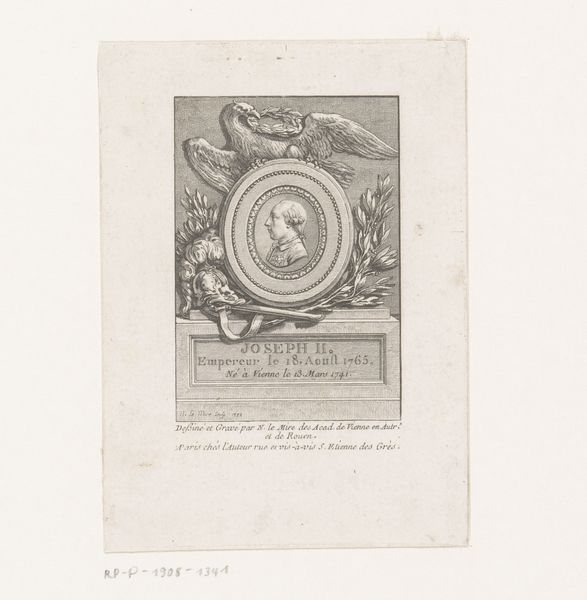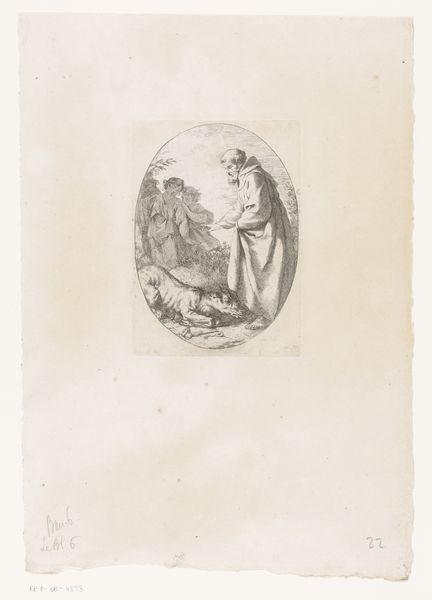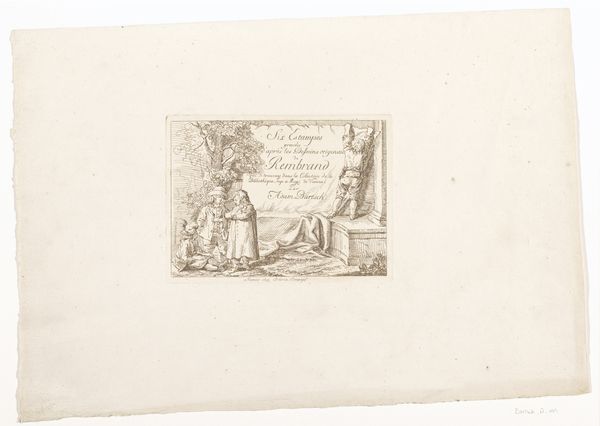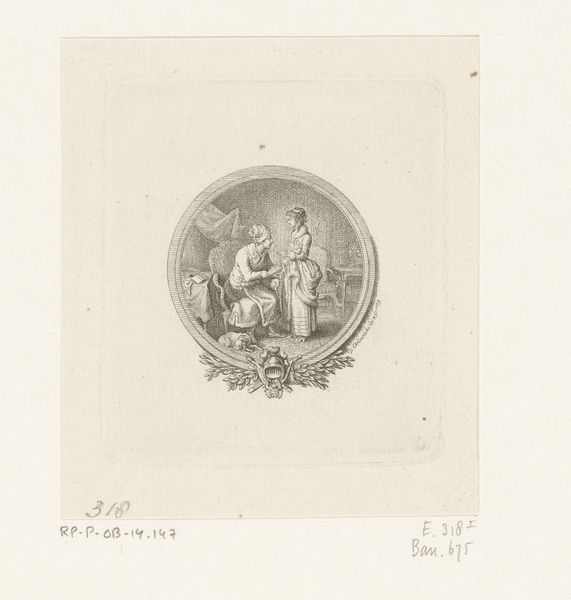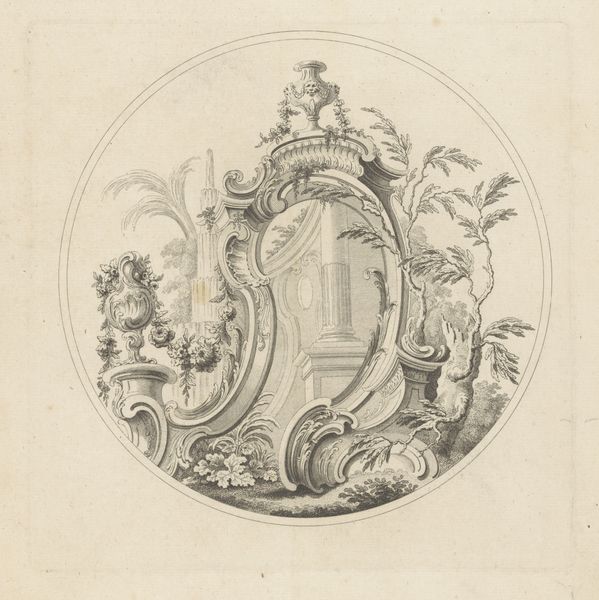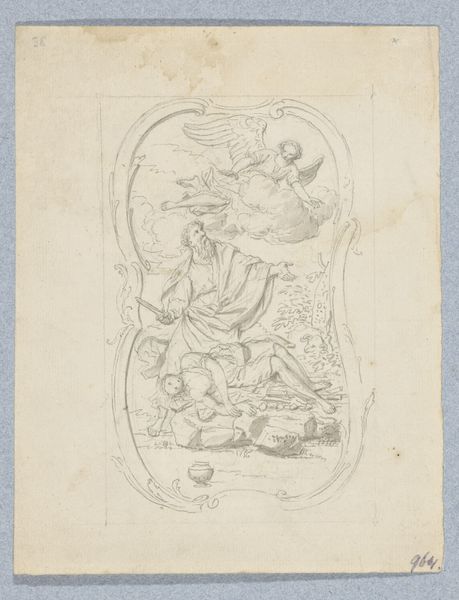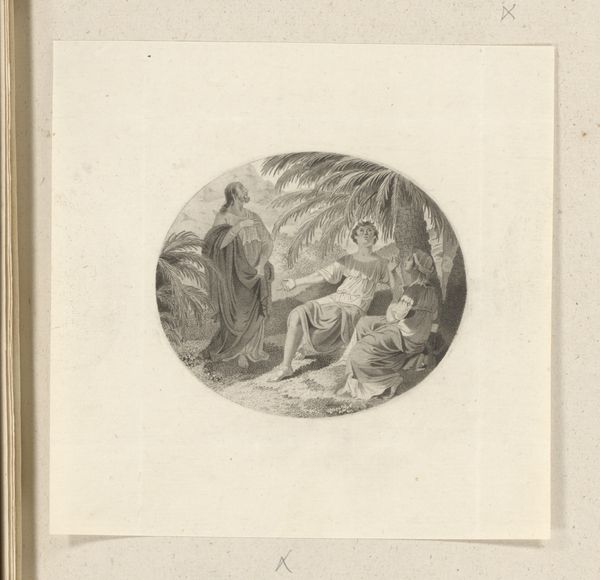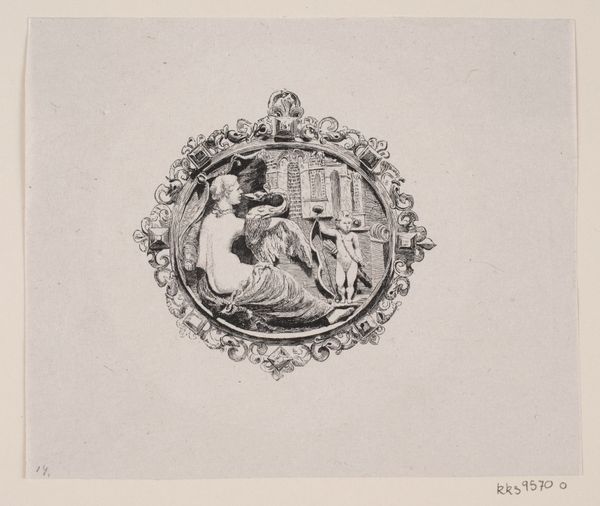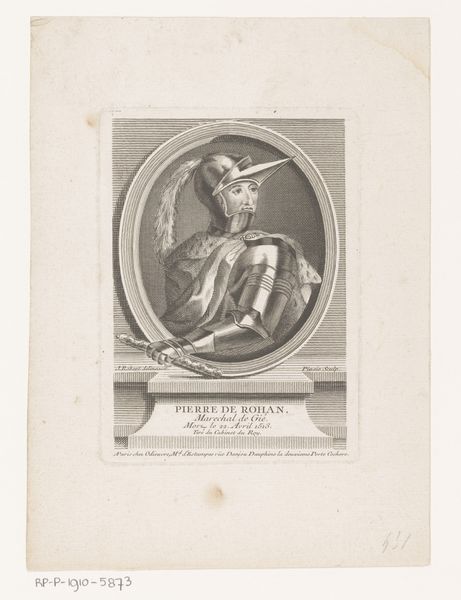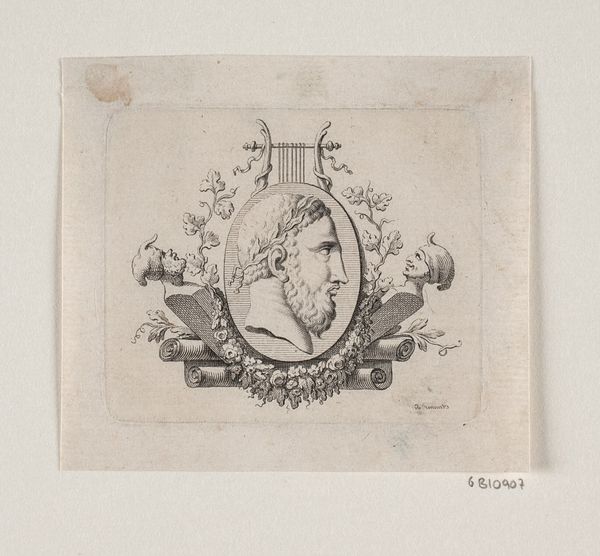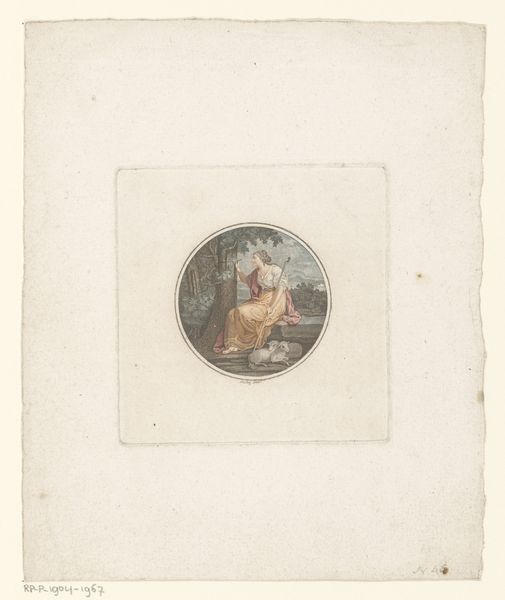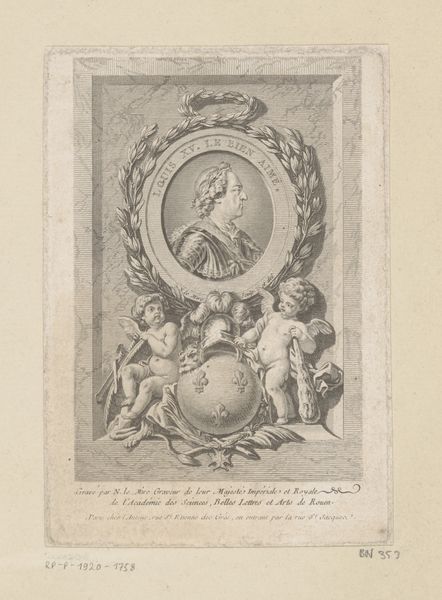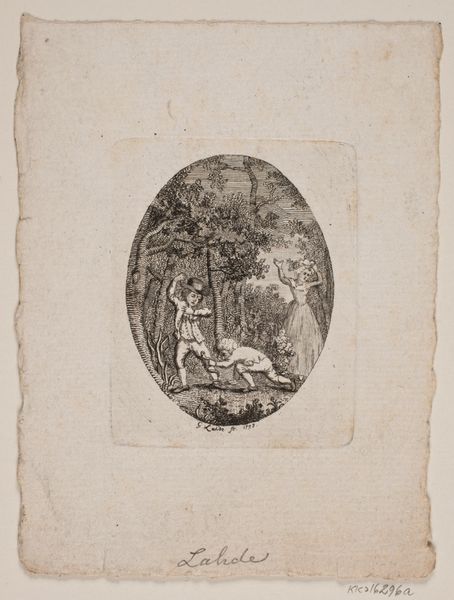
Dimensions: 278 mm (height) x 183 mm (width) (bladmaal)
Editor: So, this is Lorenz Frølich’s "Omslag til \"L`Amour et Psyché\"" from 1862, made with drawing, print, etching, pencil and engraving. It looks incredibly delicate and…well, sort of sad, even with the title being about love. What do you see in this piece? Curator: I see a potent visualization of the burdens of female curiosity and societal constraints. This piece, while seemingly illustrating a romantic allegory, is deeply embedded in the gendered expectations of the 19th century. We have Psyche, asleep and vulnerable, being awakened – arguably violated – by Amour’s divine intervention. Editor: Violated? I hadn't thought of it that way. Curator: Consider it in the context of the male gaze. Psyche’s vulnerability is laid bare for consumption. And then think about the dangers inherent in the pursuit of knowledge, especially for women in this era. What was permissible, and what brought social penalty? Is Psyche awakening or being exposed? Editor: That’s a completely different lens than how I initially saw it. The way the frame seems to almost imprison the scene, that could be speaking to a sense of confinement. Curator: Exactly! And isn’t Romanticism often a yearning for what is just out of reach, idealized beyond reality? Here, love and knowledge, "Amour et Psyché", are both just beyond Psyche's grasp in her vulnerable state. The work is also not simply *about* something but does the cultural *work* of reinforcing certain beliefs. So who benefits from her subjugation? Editor: It makes me reconsider how I interpret not only this image but others from the period as well. Thanks for sharing! Curator: The pleasure is all mine. Seeing art as part of a historical narrative forces us to think critically about gender roles and their effects.
Comments
No comments
Be the first to comment and join the conversation on the ultimate creative platform.
